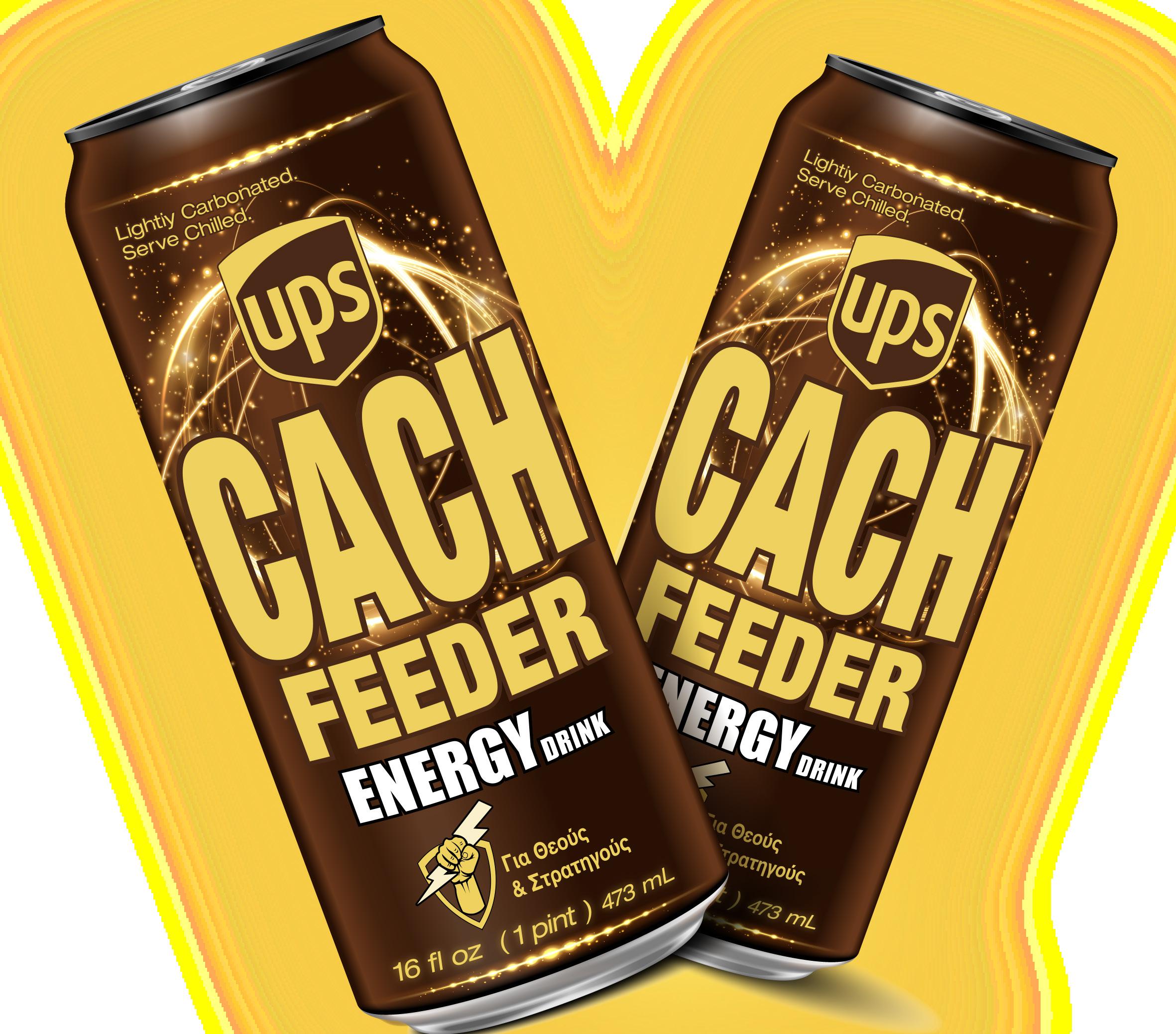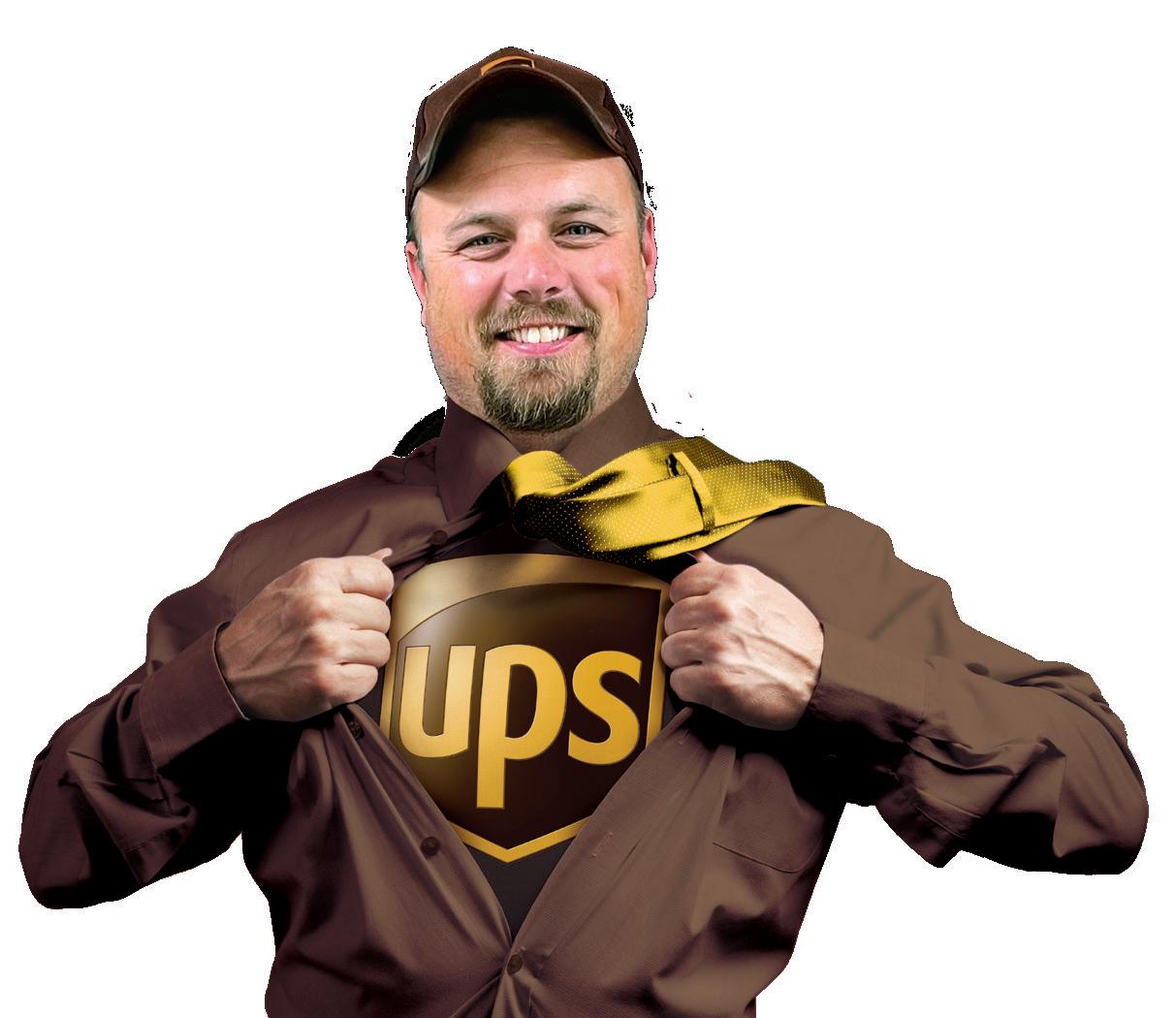






Before you pop open another can of Red Bull, you should know the not-so-innocent effects energy drinks can have on your body
In spite of the potential hazards of energy drinks, the market for them is booming. The Global Energy Drink market is expected to reach $72 billion by 2024. This is great news for energy drink manufacturers, but what are consumers really getting when they buy these drinks? Most of the major brands—such as Red Bull, Monster Energy, Rockstar Energy Drink, and NOS Energy Drink—have the same ingredients. We asked experts to reveal exactly what their ingredients do to our bodies. (Here are nine ways you can boost energy naturally—without energy drinks.)
The main source of energy in most energy products is caffeine. Monster Energy, Rockstar Energy, and NOS Energy all have about 160 mg of caffeine in a 16-ounce can. Red Bull has 80 mg of caffeine in an 8.4-ounce can. (For comparison, an 8-ounce cup of coffee can contain 80 to 100 mg of caffeine, according to the Food and Drug Administration (FDA).) Caffeine has a diuretic effect, which means it increases the amount of salt and water that your body releases via urine. In extreme cases, this can lead to dehydration. It can be particularly harmful in people who drink these products for the first time and don’t know to compensate with extra water, says nutritionist and author Beth Warren. The FDA’s official stance is that people shouldn’t consume more than 400 mg of caffeine per day, which is roughly 4 to 5 cups of coffee, but food and drink manufacturers are not required by law to list the amount of caffeine their products contain. (These are the unexpected signs of dehydration.)
As a diuretic, caffeine also poses a heart rate risk, says nutritionist Lisa Cohn, RD. A 2019 study in the Journal of the American Heart Foundation found that healthy people who drank 32 ounces of energy drinks in an hour had abnormal heart activity and higher blood pressure four hours later. And that’s not the first research on energy drinks and the heart. The Canadian Journal of Cardiology published a comprehensive study in 2015 that looked at the incidences of cardiac events after energy drink consumption among adolescents. They found that energy drink abuse among teens caused increased risk of cardiac events, especially in those with underlying heart conditions. There were even some cases of energy drink products causing changes in heart rhythm among teens with healthy hearts. This risk increases when the child engages in sports or exercise. In some cases, the high caffeine content of these drinks triggered undetected heart conditions, as in the case of a 17-year-old boy who showed up at the emergency department with sudden onset of palpitations after drinking a high caffeine pre-workout energy drink at the gym.
Energy drink products contain citric acid, which is highly corrosive to teeth, warns registered dental hygienist Anastasia Turchetta. “Imagine the collision of citric acid with sugars, and you have the perfect storm for tooth enamel demineralization and/or tooth decay,” says Turchetta. “Once your enamel is gone, it won’t grow back! What’s next?

Tooth sensitivity and thinner enamel, which will look more yellow and attract more stains.” What’s even more concerning is that the precise amount of citric acid is not required on the label, so we don’t actually know how much we’re getting. (Here are high-energy foods you could add to your diet.)
9 Side Effects of Too Much Caffeine
Although caffeine is generally safe in low-to-moderate amounts, high levels of consumption can cause unpleasant and even dangerous side effects.
1. Anxiety
2. Insomnia
3. Digestive
They may be called energy drinks, but the truth is that their main ingredients (taurine, L-carnitine and glucuronolactone) don’t provide a genuine energy boost at all. “Taurine and L-carnitine are amino acids involved in energy metabolism and are naturally found in muscle and organ tissue,” Cohn explains. “They are used in energy products but do little to boost energy. Glucuronolactone is often said to increase energy because of its supposed impact on energy metabolism, but it has no real effect on energy levels either.” The perceived energy boost likely comes from sugar (glucose is a major energy source) but it doesn’t last long before the crash comes. And the adverse effects of high sugar content don’t stop there. An energy drink typically contains about 13 teaspoons of sugar per serving—more than double the World Health Organization’s recommended daily limit of 6 teaspoons of added sugar per day. “Over time, this amount of simple sugar exposure contributes to obesity and insulin resistance,” says Warren. “Studies also show that energy products cause complications for those with heart conditions and high blood pressure. In the end, what we know and do not know about the effects of energy products is enough to skip drinking them.” (Here’s how to kick your sugar addiction.)



Guarana, another common energy drink ingredient, may be a plant, but that doesn’t mean it’s good for you. It’s high in caffeine, even more so per serving than coffee. “Guarana stimulates the central nervous system,” explains Cohn. “This provides a feeling of energy boost and mental clarity, and can reduce appetite. However, it can also cause adverse energy drink side effects such as headaches, insomnia, nervousness, and mood swings; it can be dangerous when combined with prescription medication; and it can cause various side effects, from cardiac and digestive problems to impaired judgement and decision-making.” The real danger of guarana is that it’s not listed as an additional source of caffeine on ingredient lists. “Some young adults have reported being sent to the emergency room because of overdoses of caffeine in the form of guarana-based drinks,” warns Warren.
The FDA notes that rapidly consuming 1,200 mg of caffeine or more can cause seizures and may even be potentially life threatening. An even bigger risk than energy drinks are pure-caffeine dietary supplements that are sold in a powder or liquid form. “Pure and highly concentrated caffeine products present a significant public health threat and have contributed to at least two deaths in the United States in the last few years, the FDA says.
It’s a good idea to be aware of the risk of caffeine in general, and to avoid consuming too much of it in any form.
“According to scientists at the FDA, caffeine can be part of a healthy diet for most people, but too much caffeine may pose a danger to your health.”
If you have ever watched a driver in front of your slip and slide while trying to operate the vehicle in heavy rainfall, you have probably done all you could to prevent hydroplaning yourself. Hydroplaning happens when too much water accumulates in front of your vehicle’s tires quicker than your car can push the water away.
The pressure from the extra water can lift your vehicle off the road and cause it to slide along the water. When this happens, you’re essentially water skiing while driving, which could be VERY DANGEROUS!
If you are driving on a slippery road, you should drive slower, especially if you are in a large vehicle or semi-truck. It will take longer for you to slow down if the road is wet, and if you’re driving too fast, you could hydroplane, which makes the road more dangerous for you and all surrounding drivers.






If you cannot avoid hydroplaning, you can regain control of your vehicle if you are paying attention. You can get your vehicle back on track by taking your foot off the gas and pushing the clutch pedal. This will slow the vehicle down and allow you to turn the wheels without resistance.
Make sure that the tires are in great condition to avoid hydroplaning. If the tire pressure is low or the treads of the tires are worn, you are more likely to hydroplane. The composition of the water can also change the way it reacts with your tires. If there is oil, salts, or dirt in the water, you may be more likely to hydroplane. Remember that while hydroplaning can occur no matter how fast you are going, it is important to drive slower than 40 mph when the roads are wet.

If you are a professional truck driver and you don’t keep the tires of the truck in good condition, you could be responsible for injuries if your vehicle hydroplanes and hits another automobile or a pedestrian.



To avoid hydroplaning, you should maintain a reasonable distance from the vehicles in front of you. This is especially important if you drive a truck that hauls heavy loads. Remember that the faster you are driving, the less time you’ll have to slow down and prevent an accident.
Speeding also slows your reaction time. This means that even if you notice that you are about to get into an accident, you may not be able to brake in time to prevent it from happening.
The weight of a truck can also affect the time it takes for the vehicle to come to a complete halt. Since a semi-truck is a heavier vehicle, the brakes have to work hard to stop it. This is why there are government regulations on truckload, since additional weight can determine how safe a truck is when it’s on the road in bad weather. That is why truck drivers must visit weigh stations on their assigned routes to make sure the load they are carrying is within government-mandated limits.
An empty truck can also be a safety hazard. The braking system on semi-trucks is designed to operate when the truck has a full load. When the truck doesn’t have any cargo, it doesn’t have as much traction, which means the truck needs more stopping distance. When the road is wet, the traction of the truck is significantly reduced, and you will have to travel at lower speeds to safely stop.
THE THREE MAIN FACTORS THAT CONTRIBUTE TO HYDROPLANING ARE:
• VEHICLE SPEED - as speed increases, wet traction is reduced
• TIRE TREAD DEPTH - worn tires have less ability to resist hydroplaning

• WATER DEPTH - The deeper the water, the quicker you lose traction, but thin layers of water cause hydroplaning, too
What it boils down to is that when your tires are moving over a wet surface too quickly there is insufficient time to channel the moisture away from the center of the tire. As mentioned, the water lifts the tire and you lose traction. The point at which your vehicle becomes waterborne is called the transition point. The transition point is determined by the following variables:
• Tire size - the wider the contact area relative to length, the higher the speed needed for hydroplaning.






• Tread pattern
• Tire pressure
• Water depth
• Water composition - oil, temperature, dirt, and salts change the water
• Vehicle drive-train - all wheel drive vehicles may be more likely to hydro plane in some circumstances.
• Vehicle speed - always slow down when it’s wet. Hydroplaning can occur at any speed under the right combination of conditions, but some sources define higher speeds as over 40 mph.
• Vehicle weight - the lighter the vehicle the greater the tendency to hydro plane.
• Road surface type - non-grooved asphalt is more hydroplane prone than ribbed or grooved concrete
It’s sometimes hard to tell when you’re hydroplaning. The vehicle’s rear end may be a little squirrelly. Steering may feel loose or too easy. Watch for standing water or spray from vehicles in front of you. Slow down. If you start to hydroplane, don’t apply your brakes or turn your steering wheel. Hold the wheel firmly, go straight, ease your foot off the gas until the car slows and your steering normalizes. If required to brake, do so gently with light pumping actions. For cars with anti-lock brakes, brake normally.
Are your tires checked daily for wear, tread depth, and pressure? Do the people checking them know what they’re doing? Have they been trained the same way? Do they use the same equipment? Does anybody monitor the quality of their checks? Are appropriate records maintained? These things might sound basic, but they are important because you might be betting your life on them.

The importance of sitting correctly while driving cannot be overstated. Maintaining a proper sitting over the vehicle and will minimize the chance of being injured or killed during a collision. Modern sophisticated safety features, which are designed to be effective in collision scenarios where the enough to see over the steering wheel, and is squarely in front of it. If you do not maintain this position features may not be able to protect you.
1. POSITION YOURSELF CORRECTLY IN THE SEAT ITSELF.
1. POSITION YOURSELF CORRECTLY IN THE SEAT ITSELF.

Make sure you sit straight
Your buttocks and back are square and completely squeezed into the seat
This helps to avoid backaches, possible back injuries and maintains awareness during long drives.
3. ADJUST THE RAKE OF THE SEAT
3. ADJUST THE RAKE OF THE SEAT
This should be as parallel as possible to the steering. It is impossible to reach a perfect adjustment but by adjusting the rake of the seat to an upright angle of about 110-95 degrees, we can grip the topmost portion of the wheel without locking the elbow fully and with shoulders back.
2. ADJUST THE SEAT DISTANCE.
2. ADJUST THE SEAT DISTANCE.
The seat should always be positioned with regard to the pedals. Press the brake pedal fully with your right foot and fully depress the clutch (in a manual transmission car) or brake pedal (in an automatic). The distance should be adjusted so that with fully depressed pedals, your knees remain slightly bent (about 120 degrees).



4. ADJUST THE STEERING HEIGHT.
4. ADJUST THE STEERING HEIGHT.

The steering height should be adjusted to allow us to grip the wheel properly (at 9 and 3,), with our palms just lower than our shoulders.
The best way to prevent truck drivers back pain is to simply stop and walk around so often just to stand up. This helps to ease the stress on your body from sitting, and standing up and getting out of the driver’s seat is important for your back health. Truck road. By doing what you can to help prevent back pain, doing our simple back exercises to chronic pain.

Modern commercial vehicles are engineered with the driver is sat up straight, positioned high position while driving, your vehicle’s safety
5.
Where adjustable, adjusted with the steering wheel height while gripping the wheel properly. Our elbows should be bent at about 120 degrees. There should be a minimal clearance of 10″ (and preferably 30cm) between the center of the steering hub and the base of the breastbone (sternum). It should also not be further away that 45cm.

6. ADJUST THE SEAT HEIGHT. Adjust so that you eyes are placed just above the center of the glass, this should allow us to see forward clearly, while still having a clear view of the dashboard. After readjusting the height, recheck the feet to make sure the height adjust has not compromised it.

SITTING: As a truck driver, it’s something you’re going to be doing all the time, and it could be causing you pain. And you can see the result of truck drivers back pain at any truck stop as drivers climb out of their cabs, hunched over and stiff.
IT’S TRUE that sitting for long periods of time isn’t good for your health. Your risk of blood clots, heart attack, and stroke increases. You’re more likely to have back and neck pain. Your hip flexors can tighten, your hamstrings shorten, and pinched nerves are more likely. Our bodies weren’t made to sit for so long, so when we do, the body is being stressed. Truck drivers back pain is unfortunately too common.
All this driving sounds like bad news. However, there are some simple things you can do to prevent truck drivers back pain or injury from being in the driver’s seat. From checking your posture to our back exercises for truck drivers, these steps only take a few minutes to perform.
TRUCK DRIVING POSTURE: When your posture begins to break down, muscles in your body start being pulled in directions they weren’t meant to be pulled. This results in chronic pain. Be aware of your posture. Make sure your seat is in the correct position so that your back is straight, your arms are relaxed, and your legs lightly touch the seat. You shouldn’t feel any tightness in your body in a relaxed, seated position with good posture.
BACK EXERCISES FOR TRUCK DRIVERS: Another way to prevent back pain from lots of driving: light stretching. Do some quick stretches in your cab when you make a stop. You can do anything like a twist, stretching the arms or wrists, and turning the head from side to side. This will help stretch out your ligaments and prevent long term pain. Get into a habit of stretching every time you stop.
every few hours. If you’re at a truck stop, do a few laps around your truck. If you have the time, make a quick stop every and helps increase your circulation after a long period of inactivity. Even if the weather is bad or you can’t leave your cab, Truck drivers back pain is very common, so it’s very important to keep these simple tips in mind when you’re out on the exercises for truck drivers, and getting some physical activity outside your truck, you’ll save yourself time off the road due
ADJUST THE STEERING DISTANCE 6. ADJUST THE SEAT HEIGHT.


This Club consists of IBT Local 705 and 710 along with IAM Local 701 Hourly United Parcel Service employees eligible to Retire or Retired in the Chicagoland Area. This Club was started by FEEDER DRIVERS, but open to all PACKAGE CAR DRIVERS, DOCK WORKERS, PORTERS, MECHANICS and CLERICAL WORKERS so long as they are or were Hourly Union Worker’s when they retired “Sorry No Management, as there is a limited need of supervision”.
The purposes for which P.U.P.S.Inc. has been organized are as follows:
1. To foster, promote and interchange ideas and cooperation among its members.
2. To collect and disseminate information of interest and benefit to its membership.
3. To be irrevocably dedicated to, and operated exclusively for, non-profit purposes, to the end that no part of the net earnings of P.U.P.S., Inc. Shall be distributed to or inure to the benefit of any member, director, officer or any other individual.
There is a Great Life after UPS, and P.U.P.S.Inc is a fantastic way to help you live it. For more information on activities, benefits and membership go to http://pupsinc.homestead.com



CONGRATULATIONS
CONGRATULATIONS
Mr. Jeff Sweeney, CACH Feeders July 2023
Mr. Jeff Sweeney, CACH Feeders July 2023

Driver of the Month. 23 years of super service!
Driver of the Month. 23 years of super service!
SUPERHERO Quote, July 2023: “Doesn’t matter what the press says. Doesn’t matter what the politicians or the mobs say. Doesn’t matter if the whole country decides that something wrong is something right. This nation was founded on one principle above all else: the requirement that we stand up for what we believe, no matter the odds or the consequences. When the mob and the press and the world tell you to move, your job is to plant yourself like a tree beside the river of truth, and tell the whole world – “No, you move.””
__Steve Rodgers ( Captain America ).
